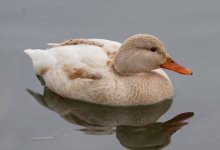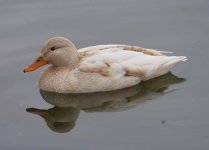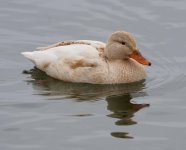Potatoheaded Bobby
Well-known member

Hope you can help. This duck has been on the lake (Professor's) for the last week. These shots where taken today.
It is hanging around with the Mallards on the lake and seems to be paired with a specific male.
I did a search and the only thing I can come up with is a cross between a domestic white and a Mallard. It is about the size of a female Mallard.
I thought it closely resembled a Buff Orpington.
Your input will be very much appreciated. Thanks



It is hanging around with the Mallards on the lake and seems to be paired with a specific male.
I did a search and the only thing I can come up with is a cross between a domestic white and a Mallard. It is about the size of a female Mallard.
I thought it closely resembled a Buff Orpington.
Your input will be very much appreciated. Thanks






